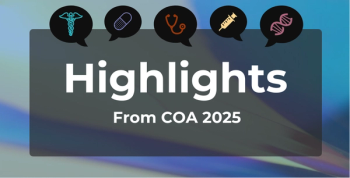
Implementing Rapid and Effective ART Initiation to Successfully Manage HIV
Mary Montgomery, MD, associate physician in the Division of Infectious Diseases at Brigham and Women’s Hospital, and an instructor of medicine at Harvard Medical School, discussed emerging treatment strategies for managing HIV during a session at the National Association of Managed Care Physicians 2019 Fall Managed Care Forum, held October 10-11 in Las Vegas, Nevada.
As countries across the globe continue the fight against HIV, treatments that are quickly initiated and effective are crucial for getting patients with HIV virally suppressed both to improve their clinical outcomes and to stop the transmission of infection.
Addressing both of these issues, Mary Montgomery, MD, associate physician in the Division of Infectious Diseases at Brigham and Women’s Hospital, and an instructor of medicine at Harvard Medical School, discussed emerging treatment strategies for managing HIV during a session at the National Association of Managed Care Physicians 2019 Fall Managed Care Forum, held October 10-11 in Las Vegas, Nevada.
More and more, clinicians are understanding the benefit of prescribing antiretroviral therapy (ART) to patients the day they are diagnosed with HIV, otherwise known as rapid ART initiation.
The literature has shown that rapid ART initiation is associated with a more favorable mortality profile, as well as quicker viral suppression. In one study,1 the median time to viral suppression was 56 days for those who initiated treatment at diagnosis, compared with 126 days for those who began treatment consistent with prior recommendations for universal ART and 219 days for those who received CD4-guided ART.
Traditionally, providers also waited for the patient to get their genotype to see if they exhibited any HIV drug resistance before prescribing ART. However, more recent data has shown that rates of transmitted drug resistance is pretty low, with a rate of 17.60% for any drug resistance.
Looking at specific drug classes, nonnucleoside reverse transcriptase inhibitors carry a resistance rate of 11.50%, nucleoside reverse transcriptase inhibitors have a resistance rate of 5.70%, protease inhibitors have a resistance rate of 3.90%, and integrase strand transfer inhibitors (ISTIs) have a resistance rate of just 0.04%.
With the rate of resistance to ISTIs being so low, and with these drugs commonly being prescribed as first-line therapy, there has been a shift in practice in which providers prescribe ART before getting the genotype. In fact, according to Montgomery, some argue foregoing baseline genotyping testing altogether because of the cost and the low rate of resistance.
For Montgomery, there are some instances in which she would delay ART until receiving genotype testing, including if a patient is dating or engaging in sexual intercourse with someone who has a lot of HIV resistance, as well as if someone who had intermittently been using pre-exposure prophylaxis and developed HIV.
When choosing the first-line treatment for patients diagnosed with HIV, it may seem like there are endless options, but it’s important to factor in several considerations to find which regimen works for which patient, such as preference for multiple pills versus single-tablet regimens, barrier to resistance, food requirement, drug—drug interaction, and medical comorbidities, said Montgomery.
Among the options recommended by HHS for initial treatment, there are 2 that Montgomery uses often in clinical practice: Biktarvy (bictegravir/emtricitabine [FTC]/tenofovir alafenamide [TAF]) and dolutegravir (DTG).
Biktarvy is a once-daily, single-tablet regimen that includes the novel, unboosted INSTI bictegravir and is indicated for both patients with HIV-1 ribonucleic acid (RNA) <50 copies/mL for at least 3 months with no history of treatment failure and no treatment resistance, as well as for treatment naïve patients.
Both Biktarvy and DTG have a high barrier to resistance.
Montgomery noted concerns that have surrounded DTG since May 2018, when data came out that the treatment was
More recently, 2 randomized clinical trials pointed to significant weight gain associated with treatment with DTG when combined with TAF. In the
In the
While both trials demonstrated that DTG was noninferior to EFV, results did show that there was
Based on these findings, there are various questions that are left unanswered, said Montgomery:
- Why is INSTI use plus TAF associated with weight gain?
- Why does TAF cause more weight gain than TDF?
- Is there a difference between INSTIs?
- Will the trend reverse if the drugs are stopped?
- Will this weight gain lead to diabetes, metabolic, or cardiovascular risks?
Reference
Pilcher CD, Ospina-Norvell C, Dasgupta A, et al. The effect of same-day observed initiation of antiretroviral therapy on HIV viral load and treatment outcomes in a US public health setting [published online January 1, 2017]. J Acquir Immune Defic Syndr. doi: 10.1097/QAI.0000000000001134.
Newsletter
Stay ahead of policy, cost, and value—subscribe to AJMC for expert insights at the intersection of clinical care and health economics.







































